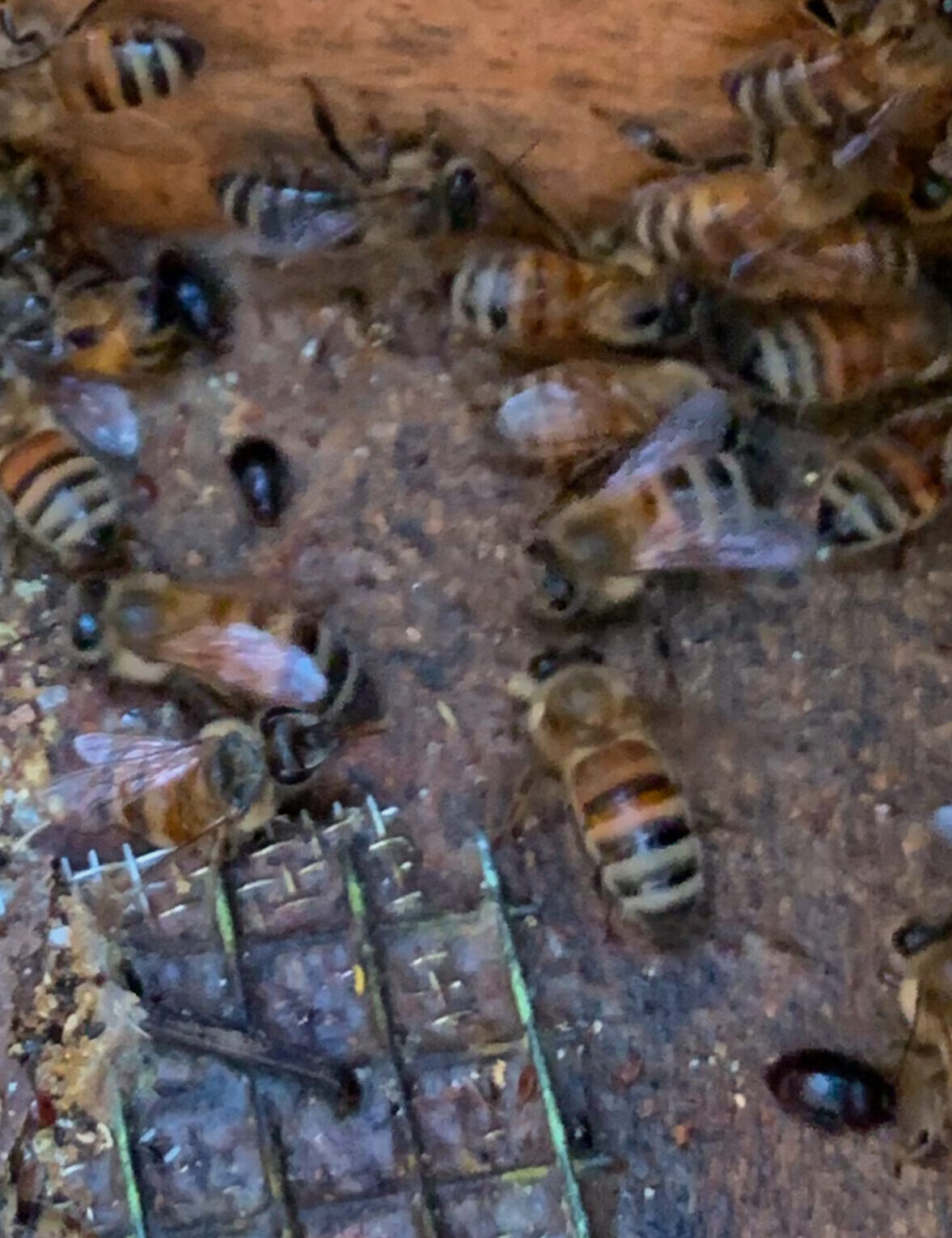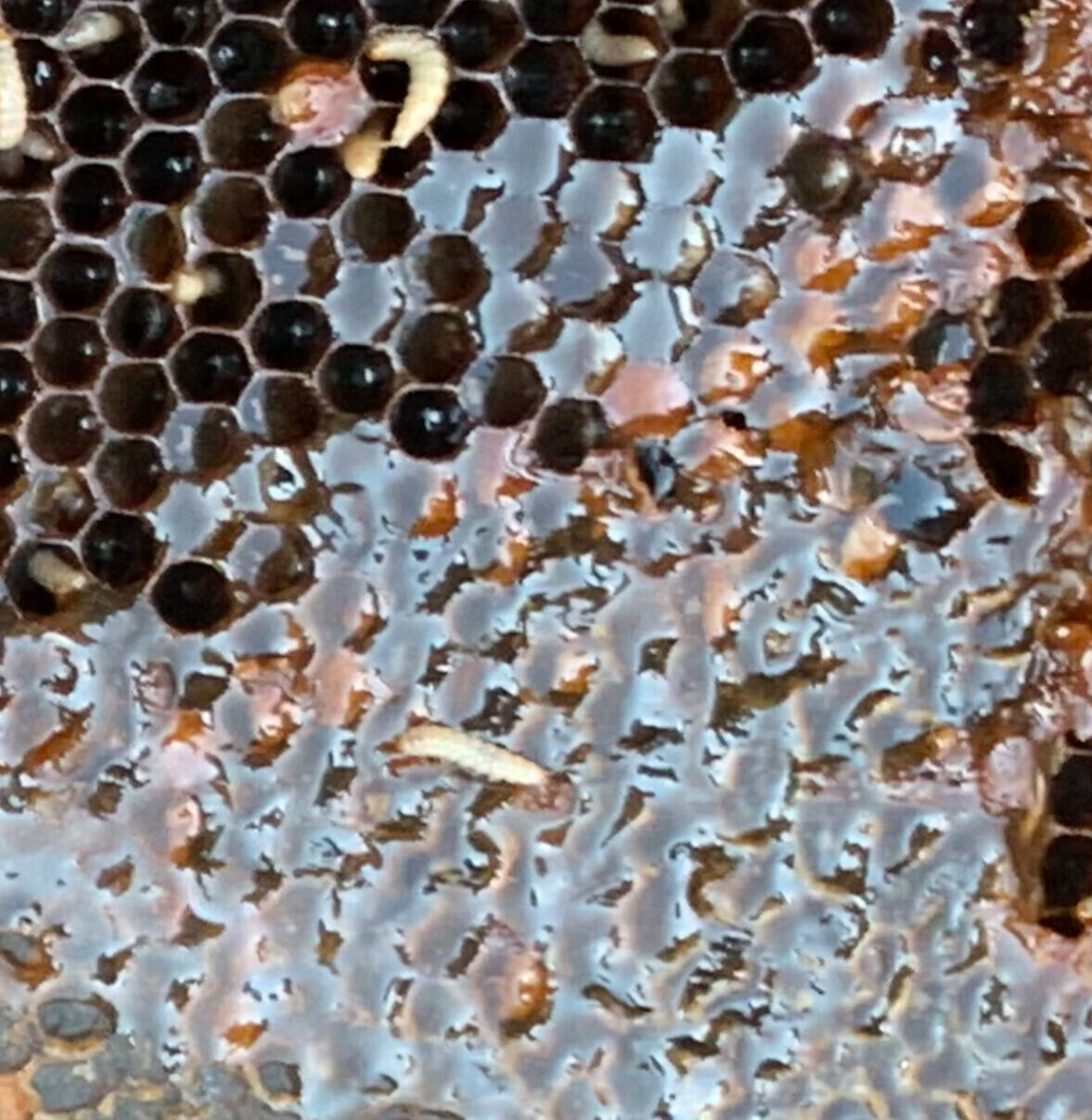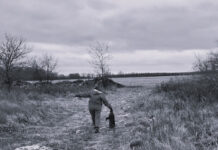Ten years ago, when I started as a county apiary inspector, the small hive beetle, affectionately called SHB, was scarce in Ohio. The state inspector at the time, Barb Bloetscher, had handouts and slides at the annual meeting. She informed us that the SHB was moving north out of Florida and Georgia and would soon be common in Ohio. Barb was right, it didn’t take long for the beetle to show up and eventually become common.
Like most invasive species, measures can be taken to slow their arrival, but they eventually will find their niche in the ecosystem. The county inspectors were asked to document and collect samples to be sent off to a lab to genetically trace and utilize for further studies. My first year, I believe I only encountered two apiaries from over 500 hives inspected in the county that had a minimal amount of SHB.
Small hive beetle

The SHB is native to Africa and behaves like a scavenger that takes advantage of weaker colonies. The first record of this beetle was recorded in May 1998 in a commercial apiary in Florida. The adults and larvae of the SHB are found in active bee hives and in stored equipment. Honey supers that are harvested and stored in garages or in honey houses can attract the beetles, and unless extracted quickly, can produce a breeding ground for these disgusting vermin.
The adults are dark brown to black, about the size of a ladybug, with a distinct club-like antenna on the end. The SHB females, larger than the males, will deposit their eggs in the comb of honey and pollen.
The eggs are white, about five times smaller than a grain of rice, and about as thin as the lightest thread you can imagine. I have seen them in the beetle barn traps that I use when the trapped beetle has deposited its eggs before dying. I don’t think you will find them in a hive because the bees would eat them or dispose of them, and they are so small that it would be nearly impossible to find them.
The problem

The adults are not the problem. They are the beginning of the problem — the larvae. The bees could destroy or eat the larvae, but the problem is that they are underneath the honey and pollen, and the bees cannot get to them as they grow.
After the eggs hatch, the hungry larvae burrow under the pollen and honey and consume everything they can eat, including bee larvae. As they grow bigger, they are the size of typical fly maggots and are equally as handsome. The SHB larvae soon spread and defecate throughout the frames of the hives, becoming too much for the bees to control. The honey that they eat and burrow under becomes fermented from the beetles’ waste and becomes unusable to the bees. The last option is that the bees abscond from the hive, leaving a disastrous, disgusting mess for you to clean up.
Recommendation

When encountering a hive that has been slimed and taken over by SHB, my recommendation is to bag all the frames in heavy plastic trash bags and seal them up for the trash man or to burn them. The last thing you want is to let the larvae get away and burrow in the ground to start the process over. The box, bottom board and cover are all salvageable after scraping and cleaning, but the frames, to me, are disposable. I know some beekeepers will clean up and salvage some frames by freezing, but if you put that frame in another hive, you risk the chance of eggs under the comb hatching and creating another problem.
If you have a plastic foundation and want to save the $1.50 each, you can soak them in a bleach solution for a few days and make sure the plastic is spotless. I believe most severe infestations happen when the beekeeper takes a couple of frames from a hive that was a winter dead-out and places them in a smaller hive. Because these frames were unprotected and outside, they could have been recently exposed to SHB, or the developing eggs or larvae were not seen upon inspection. Days or even weeks later, when the hidden larvae hatch, your hive becomes infested.
If Varroa mites and their viruses are the silent, deadly killer of hives, the SHB is the direct opposite. The SHB presence is all too well known when the devastation hits, and it will take over your hive very fast and very noticeably. Think Slimer from Ghostbusters!
Control
The good news is we have a few weapons to battle these beetles.
The toughest bee stinger cannot penetrate the beetle’s Sherman tank armor, so the bees result in chasing them around the hive, harassing them, and sometimes cornering them and propolizing them into a mini jail. More often than not, they are corralled up top of the inner cover or lid, and when you open the hive for inspection, you release the beetles they corralled. The chase game is on again, as you watch the beetles try and avoid the wrath of the bees.
Lucky for the bees, there is help. One method of capturing these beetles is to place pieces of unscented Swiffer dryer sheets in the corners of the hives and watch them get snagged and tangled on the sheets. You will lose a few bees, but they catch more beetles than bees. Another is a beetle trap that lies between the frames and is filled with vegetable oil and apple cider. The cider attracts the beetles to the trap with the help of the harassing bees, and the oil drowns them when they fall in. The one trap I prefer is the beetle barn. These traps are placed on the bottom board or on the top of the frames. The beetles enter through a small opening that the bees can’t fit into and eat a piece of check mite or bait of your choice. Blythewood Bee Company recommends that only approved pesticides be used in hive beetle traps. On their website, they cannot and do not suggest the use of fipronil, Crisco/ Boric acid blend or any other unapproved product to kill hive beetles inside this trap.
Strong hives will keep beetles under control, but using a variety of the tools available for controlling SHB will greatly aid in controlling this new pest.















